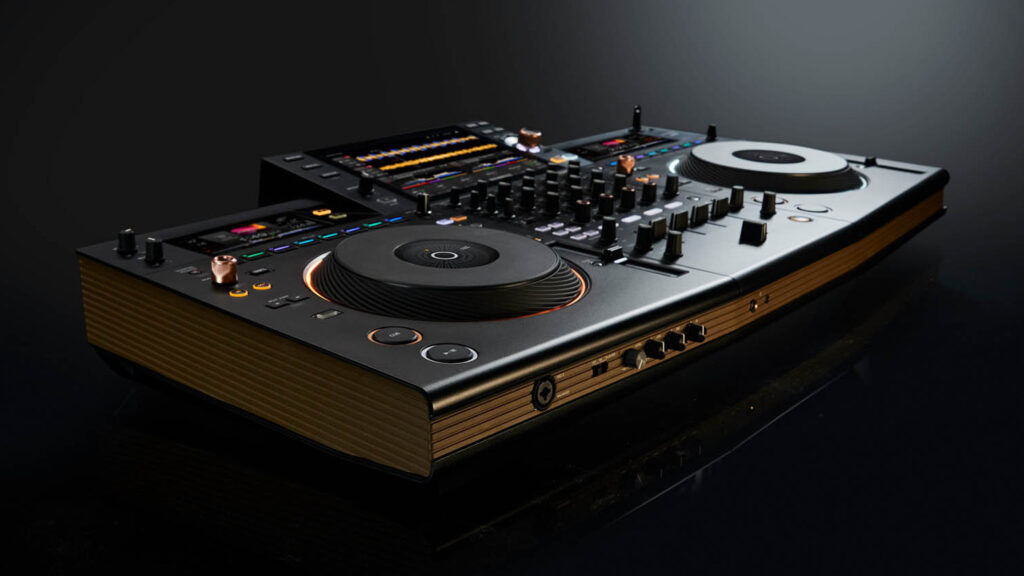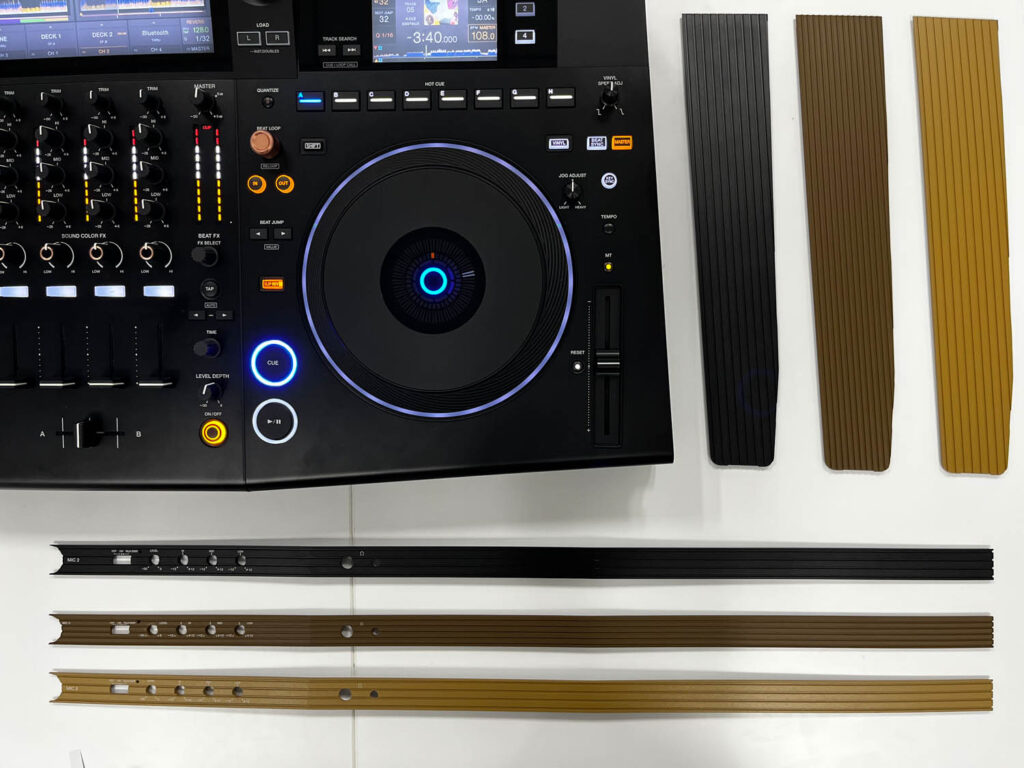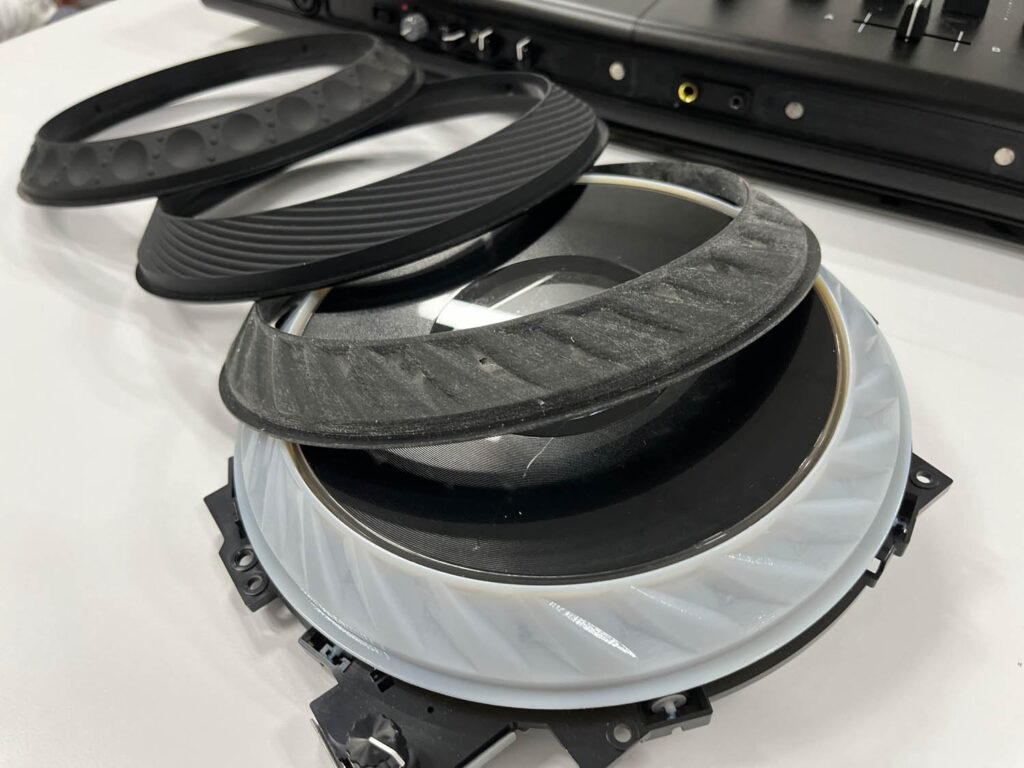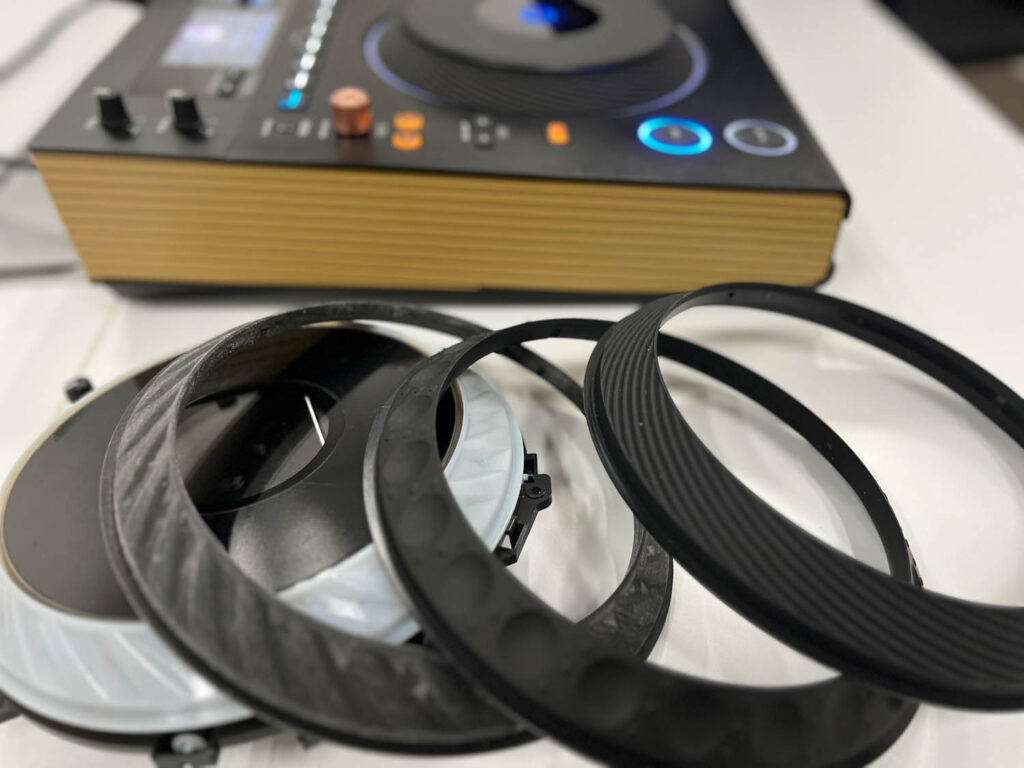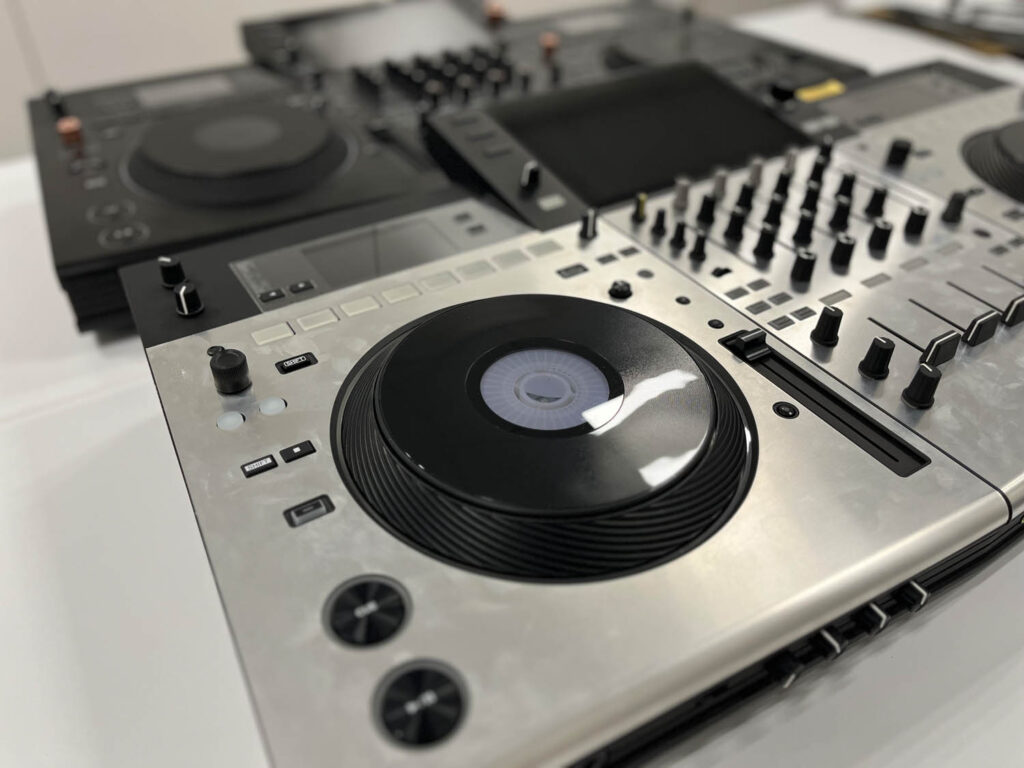From fashion runways to hotel lounges, today’s DJs can be found playing in a wide range of venues. That’s created a market for beautiful equipment that allows professional DJs to step out from behind the traditional booth in a nightclub and explore new performance opportunities
Headphones cocked at an angle, hands flying over an array of knobs and faders, the DJ is a mainstay of parties of all kinds, from Luton to Las Vegas. But chances are that the last time you saw a DJ, it wasn’t even in a nightclub.
In recent years, DJs have performed in all types of venues and at all kinds of events, from clubs and hotel lounges to fashion parties, product launches and on live streams. The role has become increasingly diverse, with the performer needing to adapt to different situations and having the equipment to match.
The traditional set-up of two turntables, a mixer, a weighty record bag and a glut of wires and connectors naturally brings challenges when it comes to transportation. The alternative is for venues to offer performers access to an industry standard set-up, but that means they must keep the equipment up to date and stored securely when not in use.
“Lots of our products are designed with a strong focus on nightclubs, so we’re seeing more and more cases where the equipment doesn’t quite fit the bill,” says Pioneer DJ designer Muneki Sugita.
The black, angular metal cases of most nightclub audio equipment is based around their truly functional purpose, with a set formula of switches, dials, turntables and displays.
But Sugita and the team saw the need for more versatile products that can work in any venue or space, and began development of the Pioneer Opus-Quad.
Opus-Quad // All in one
The black body of the all-in-one unit of the Pioneer Opus-Quad is curved and angled quite differently from any other DJ unit, with a textured bronze-coloured wrap around the case and function knobs similarly highlighted in a rich metallics.
There are three displays (one for each turntable controller and one for the mixer) and textured jog wheel surrounds. Its visual appearance, when compared to that of its predecessors, is nothing short of opulent.
We focussed on giving the product playability as if it’s a musical instrument
Looks aside, the functionality delivered by the Opus-Quad is a DJ’s dream. The unit is Pioneer DJ’s first all-in-one device to have four decks in one standalone unit. The display user interface allows the DJ to access their music with fewer physical moves and effects can be freely changed with a single finger touch.
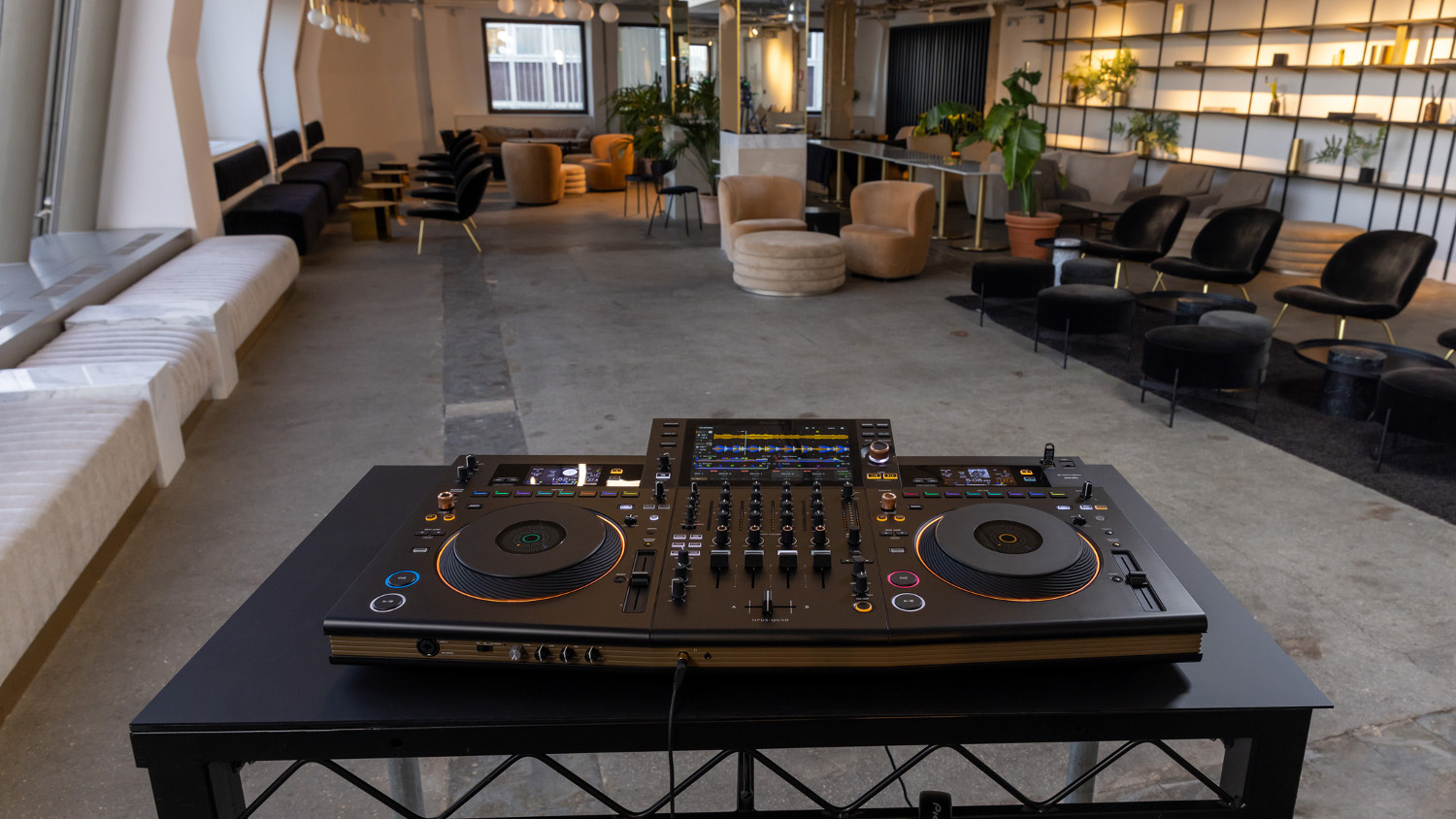
The Opus-Quad offers a harmony of evolved playability and beautiful design that matches any environment,” says Sugita. “We focused on giving the product playability as if it’s a musical instrument.”
The word Opus is used today to refer to a work of art, but it originally comes from the Latin term Opus Dei, or ‘work of god’ — the singular form of Opera. The shape of a theatre’s orchestra pit was clearly an inspiration, and the Pioneer DJ design team approached the concept with the user standing behind it, performing on the stage to a crowd fanned out in front of the music.
The initial design sketch adopted this fan shape, and was created in a collaboration between different departments, including the housing design team and product designers. From the concepting work, you can see how the rich decor of theatres – all gilded ceilings and draped fabrics – also impacted the CMF of the design.
From here, it took a lot of time and effort to decide on a shape and method that would allow mass production without compromising the initial image concept sketches.
The process moved into 3D, using Rhino 3D 7 to conduct the geometry study, which gave Sugita and the team a high degree of freedom for modelling.
Thanks to the thorough study we conducted in the early stages, we were able to bring the sketches to life in the prototypes without any major problems
The CMF studies were produced using Luxion KeyShot 11, helping speed up the decision-making process with models that could be assessed from all angles and quickly modified, says Sugita. “In particular, KeyShot 11’s rich and customisable material libraries allowed us to quickly go from rough study to detailed adjustment. Thanks to the thorough study we conducted in the early stages, we were able to bring the sketches to life in the prototypes without any major problems.”
With the use of multicoloured LED illumination in several areas of the product, adding further functional purpose, the team relied on optical simulation to determine the most efficient ways of emitting the light.
Surface expression
The main surface of the Opus-Quad is formed from aluminium plates that connect from the top to the front of the unit. Each plate had to be divided into three parts — the mixer section and the left and right deck sections. That proved difficult to manage so that the round bends of all three parts of the front section would neatly align. Physical prototyping proved essential for solving this design challenge, as well as tackling other issues to ensure the right fit and finish.
The streamlined shape on the outer ring of the jog wheel, which looks like a blend of a whirlpool and the folds of a theatre curtain, give the Opus-Quad more textures and the jog wheels a smooth, unique look, but also makes it more precise to operate.
We created more than a dozen prototypes using a 3D printer and determined the shape by actually seeing and touching the prototypes,” says Nozaki Hideaki, a member of the Pioneer DJ engineer team.
“Each prototype was made so it could be attached to our existing jog model, so we could actually use it and get a feel for how it worked.”
Similarly, the width and pitch of the grooves on the front and side panels of the cabinet were determined through repeated iterations, explains Hideaki, stating that they deliberately chose specifications that were both beautiful and functional.
The product was developed by a 35-person, multidisciplinary team with three designers responsible for the visual aspects of the design, including product and displays, and packaging and marketing, with around 15 design and hardware engineers involved.
“At first, we were concerned about whether we’d be able to achieve our vision, but the design was well received both internally and externally, so we were relieved!” laughs Sugita. “By providing products that can work in any venue or space, we hope to expand the range of places where DJs can play an active role and allow more people to enjoy an amazing experience.” Whether it’s a performance at 4pm or 4am, the Opus-Quad has the looks and ability to take to any stage, anytime.
This article first appeared in DEVELOP3D Magazine
DEVELOP3D is a publication dedicated to product design + development, from concept to manufacture and the technologies behind it all.
To receive the physical publication or digital issue free, as well as exclusive news and offers, subscribe to DEVELOP3D Magazine here

